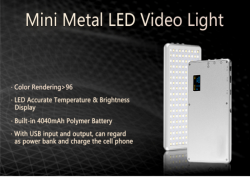1. Building exterior lighting
Projecting a certain area of the building is nothing more than the use of round and square-shaped projection lamps that control the beam angle, which is completely consistent with the concept of traditional projection lamps. However, due to the small and thin LED light source, the development of linear projection lamps has undoubtedly become a major point of LED projection lamps, because many buildings have no overhanging places to place traditional projection lamps. It is easy to install and can be horizontal or vertical. Directional installation, better integration with the building surface, brings new lighting vocabulary to lighting designers, expands the creative space, and will have an impact on the lighting techniques of modern and historical buildings.
2. Landscape lighting
Unlike traditional lamps, the light source is mostly glass bulbs. LEDs can be combined with urban street furniture and can be used for lighting in urban leisure spaces such as paths, stairs, decks, waterfronts, and gardening. For flowers or low shrubs, LEDs can be used as a light source for illumination. LED concealed floodlights will be particularly popular, and the fixed end can be designed as a plug-in type, which can be adjusted according to the height of plant growth.
3. Signs and indicative lighting
Places that require space restriction and guidance, such as the partition display of roads and pavements, local lighting of stair steps, emergency exit indication lighting, LED self-luminous buried lamps with appropriate surface brightness or lamps embedded in vertical walls, such as Floor guides or indicator lights on the side of seats in theater auditoriums, and guide lights on floors in shopping malls. In addition, compared with neon lights, LEDs have low voltage and no fragile glass, and will not increase costs due to bending during production. It is worth promoting and using in logo design.
4. Indoor space display lighting
As far as lighting quality is concerned, since the LED light source has no heat, ultraviolet and infrared radiation, it will not cause damage to exhibits or commodities. Compared with traditional light sources, lamps do not require additional filter devices. The lighting system is simple, low-cost, and easy to install. Its precise lighting can be used as a substitute for optical fiber lighting in museums. Commercial lighting uses colored LEDs in metropolises, and interior decorative white LEDs combined with interior decoration provide auxiliary lighting for the interior. LEDs can be used for hidden light bands, which is particularly advantageous for low spaces.
5. Entertainment venues and stage lighting
Due to the dynamic and digital control of color, brightness and dimming of LEDs, lively saturated colors can create static and dynamic lighting effects. From white light to any color in the full spectrum, the use of LEDs opens up new ideas in the lighting of such spaces. The maintenance value of long life and high lumens (90% luminous flux is still maintained after 10,000 hours), compared with the 50-250 hour lifespan of PAR lamps and metal halide lamps, reduces maintenance costs and the frequency of light source replacement. In addition, the LED overcomes the color shift of the metal halide lamp after a period of use. Compared with PAR lights, there is no heat radiation, which can make the space more comfortable. The application of LED color decorative walls in restaurant buildings has become a common practice.
6. Video screen
The full-color LED display is the most eye-catching outdoor large-scale display device in the world today. It adopts advanced digital video processing technology and has an unparalleled super large area and super high brightness. In addition, the LED lights installed on the screen can also adopt various specifications of light-emitting pixels according to different indoor and outdoor environments to achieve different brightness, color, and resolution to meet various purposes. It can dynamically display graphics, text and animation information, and use multimedia technology to play various multimedia files. The most influential LED display in the world is undoubtedly the New York Stock Exchange in Times Square, Manhattan, with a total of 18,677,760 LEDs and an area of 10,736 square feet. The screen can be divided into multiple screens, which can be displayed at the same time, presenting the quotations of the Wall Street stock market to the public at a glance. In addition, the Aurora International Headquarters, which rises in the Lujiazui Financial Center in Pudong, Shanghai, has a 100m-long ultra-large LED screen on the entire facade of the building facing Puxi, with a total area of 3,600 square meters. Called the number one in the world.
7. Vehicle indicator lighting
Used for vehicle road traffic LED navigation information display. In urban traffic, highways and other fields, LEDs are used as variable indicator lights and lighting functions to replace similar foreign products and are widely used. Among them, power dispatch, vehicle dynamic tracking, vehicle dispatch management, etc., are also gradually adopting high-density LED display screens to serve as indicator lights.
Post time: Aug-25-2021 BACK




